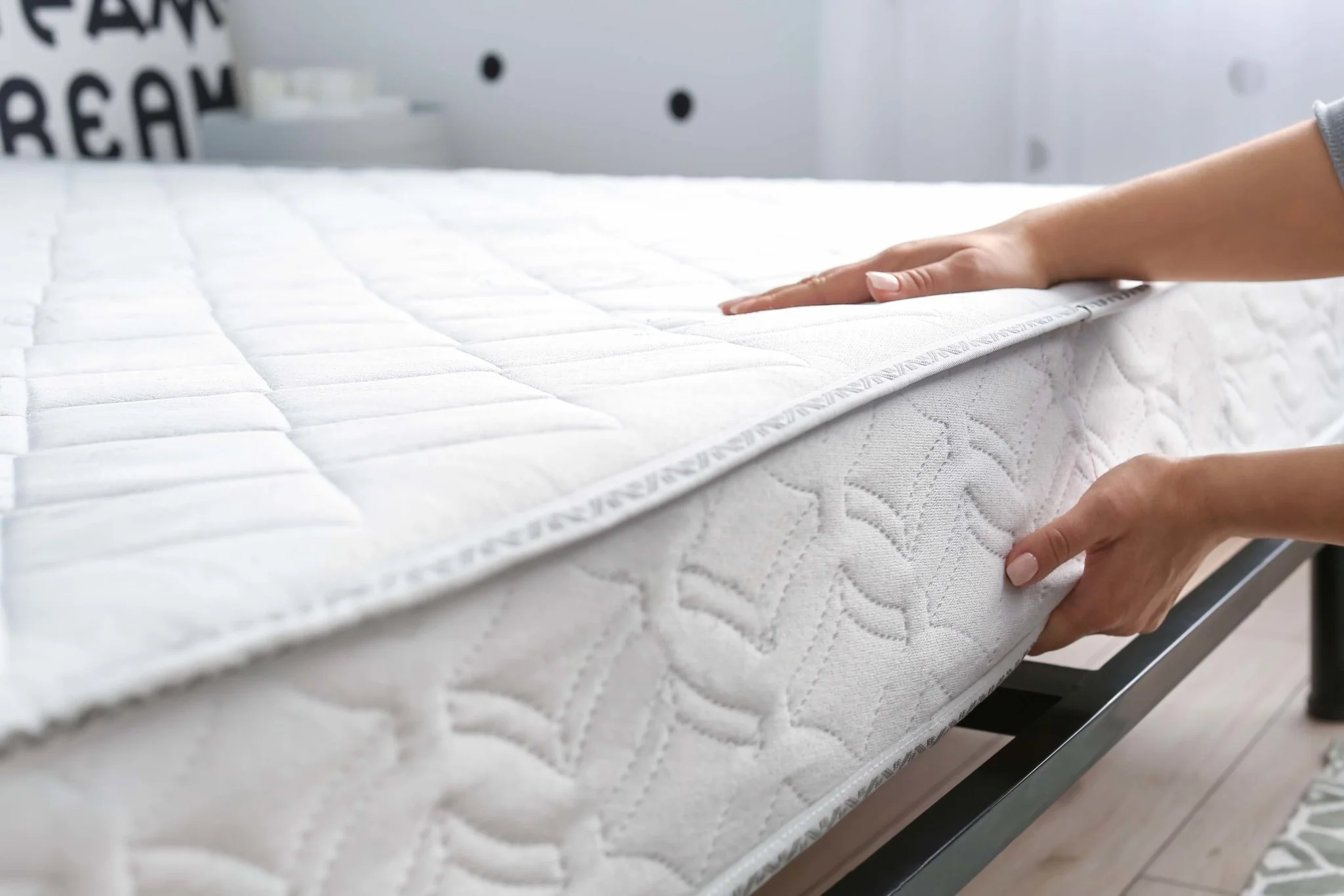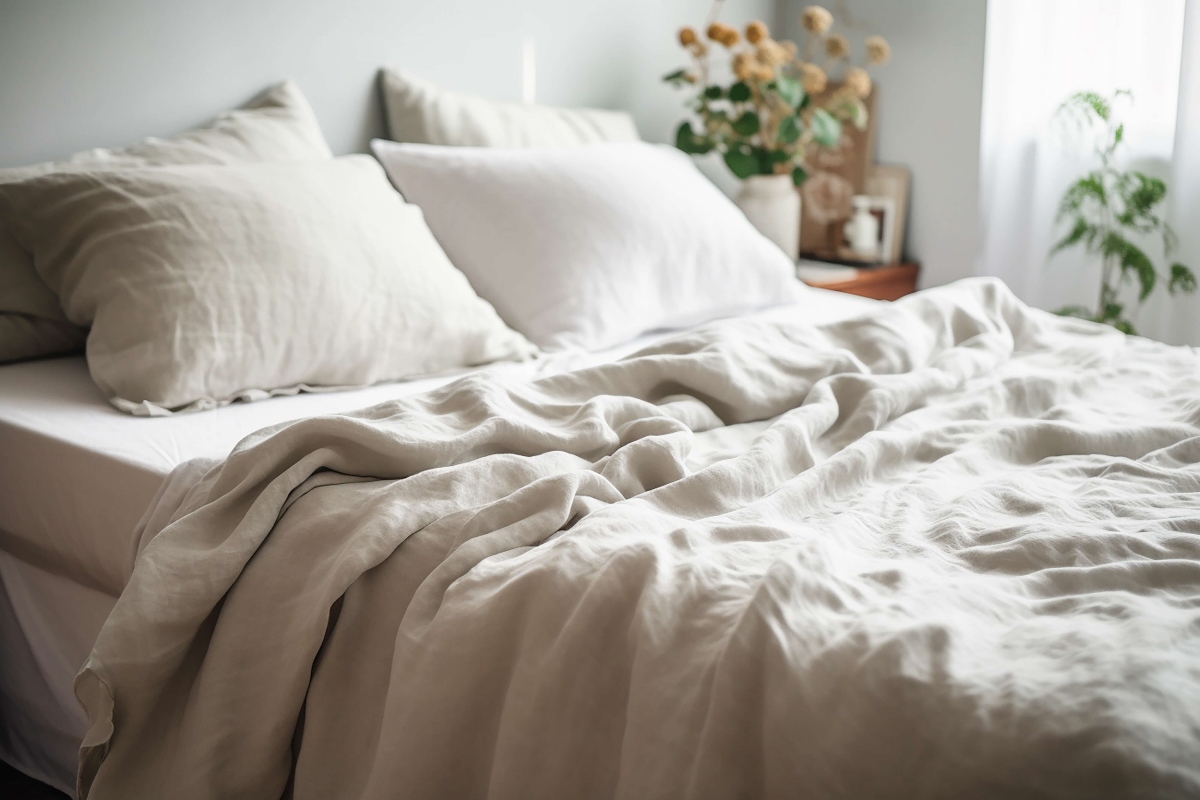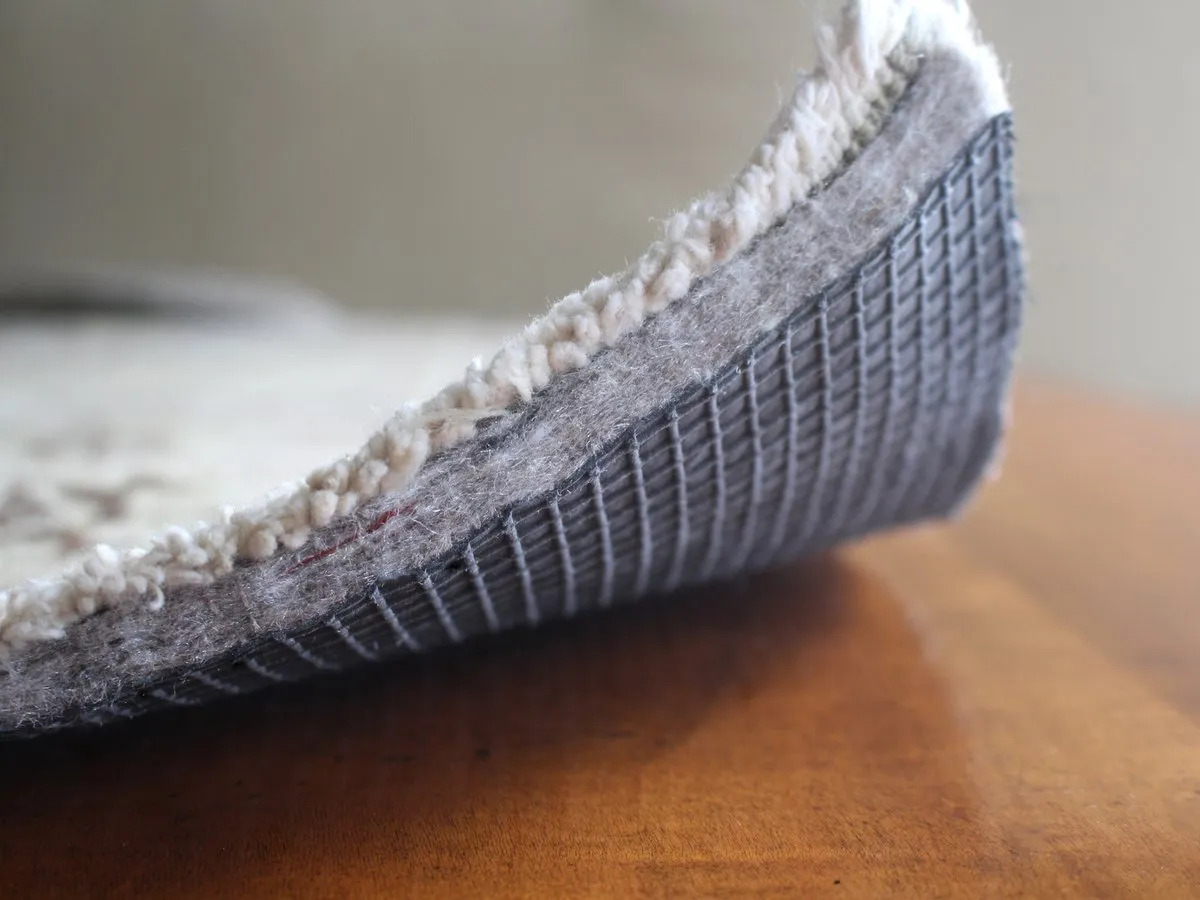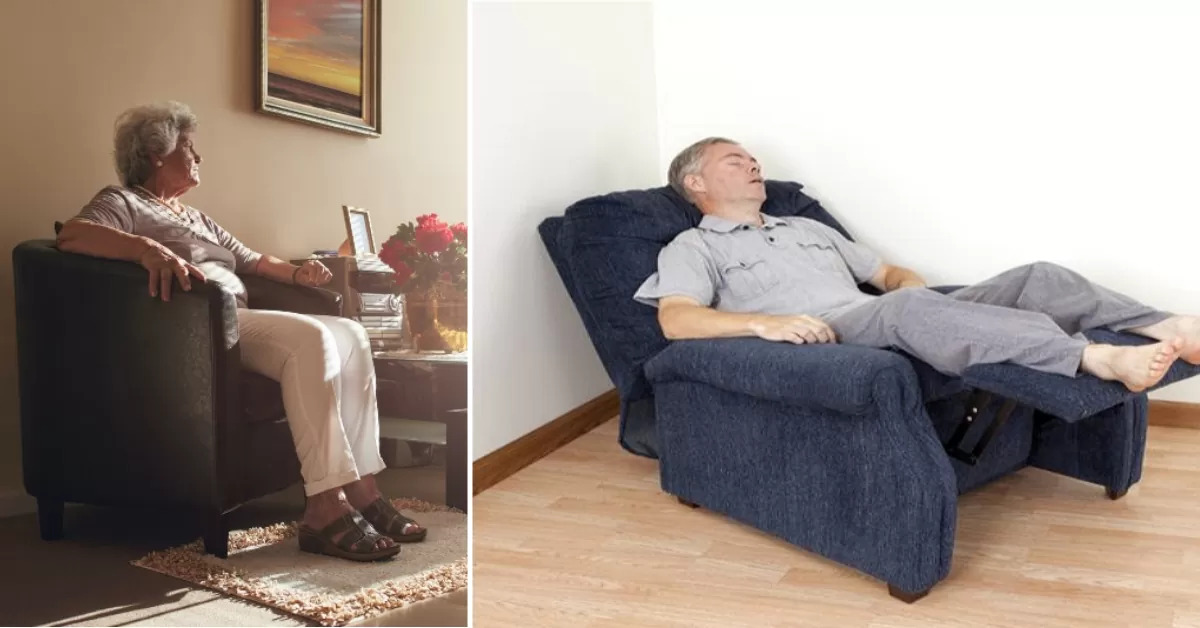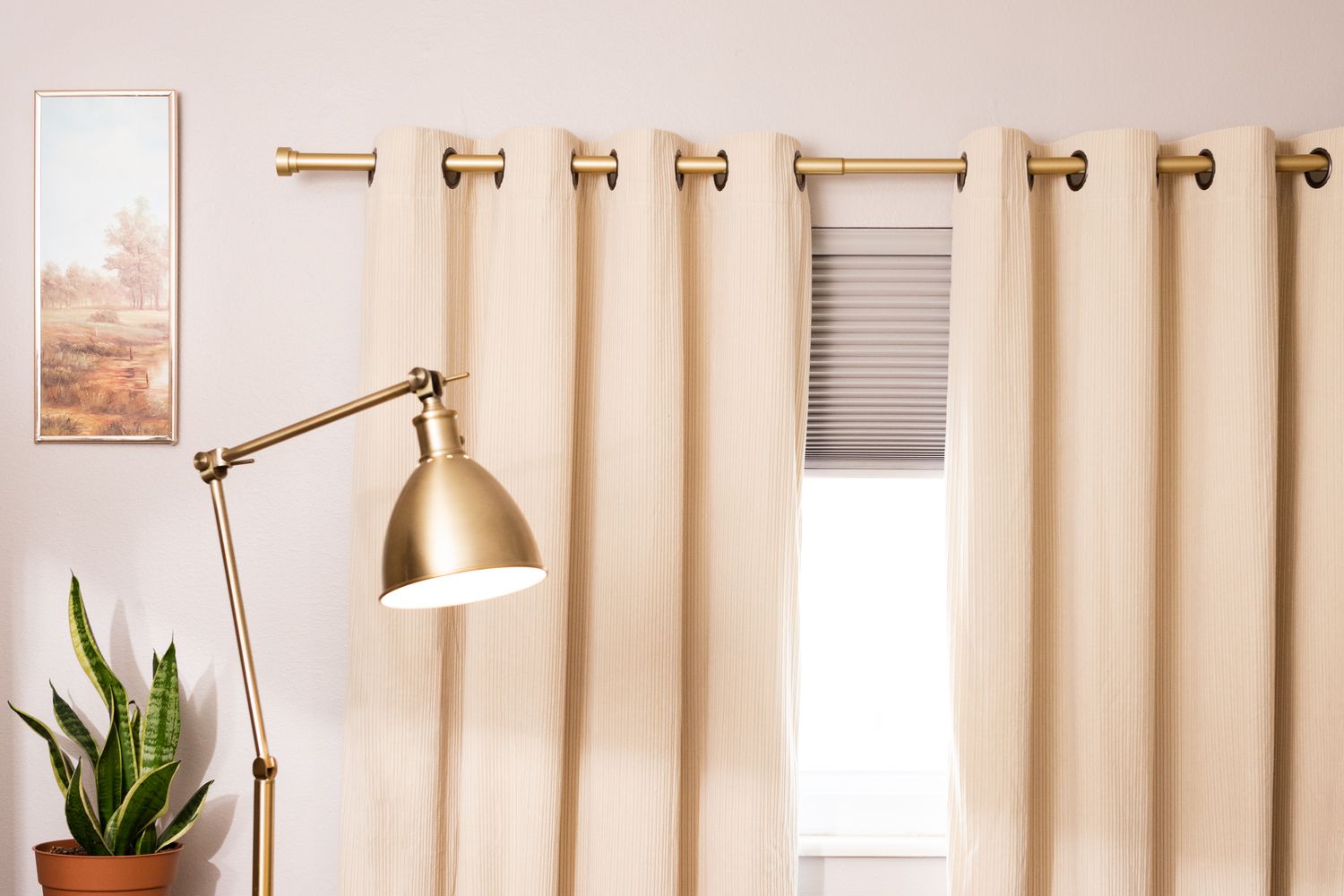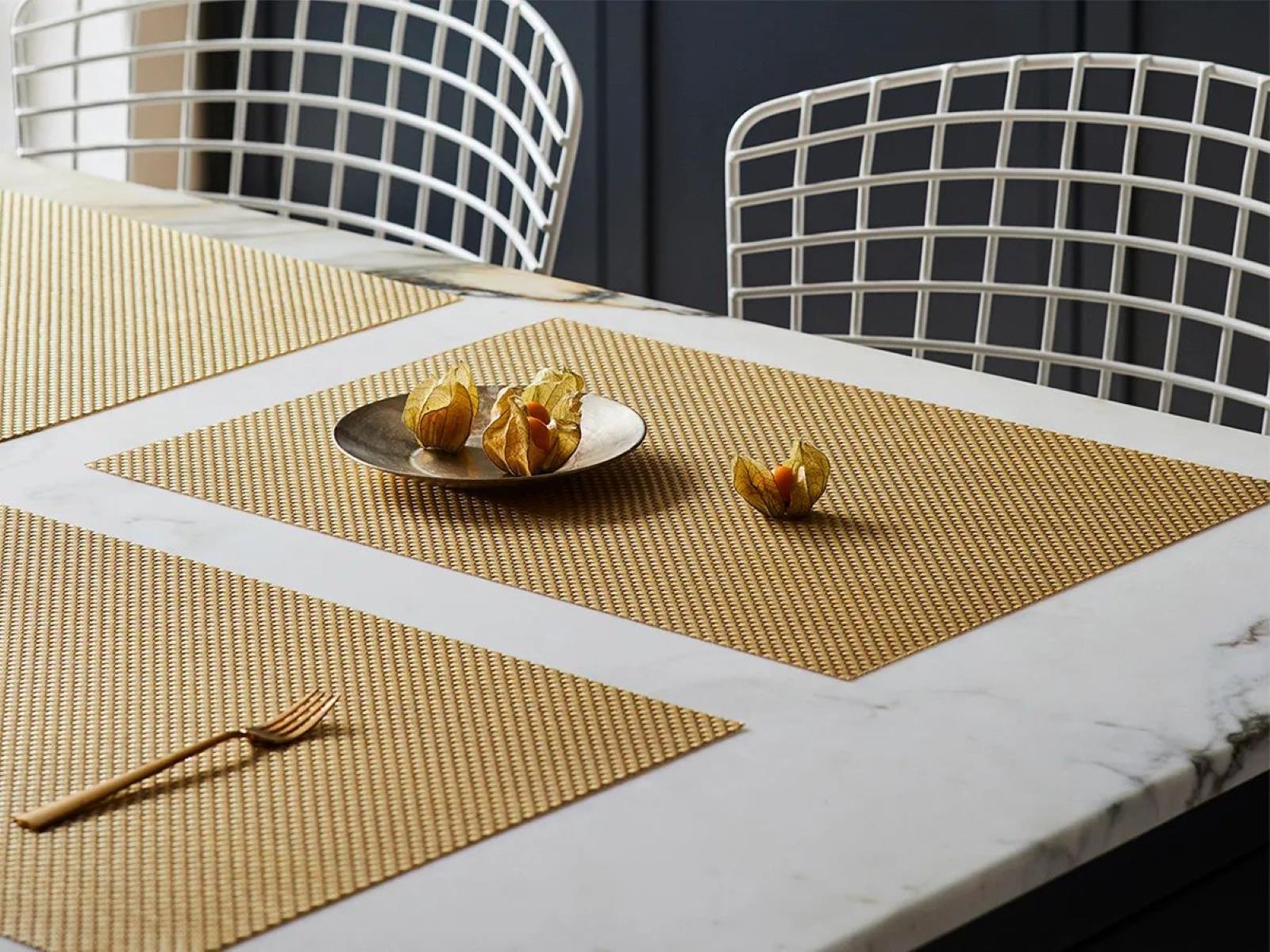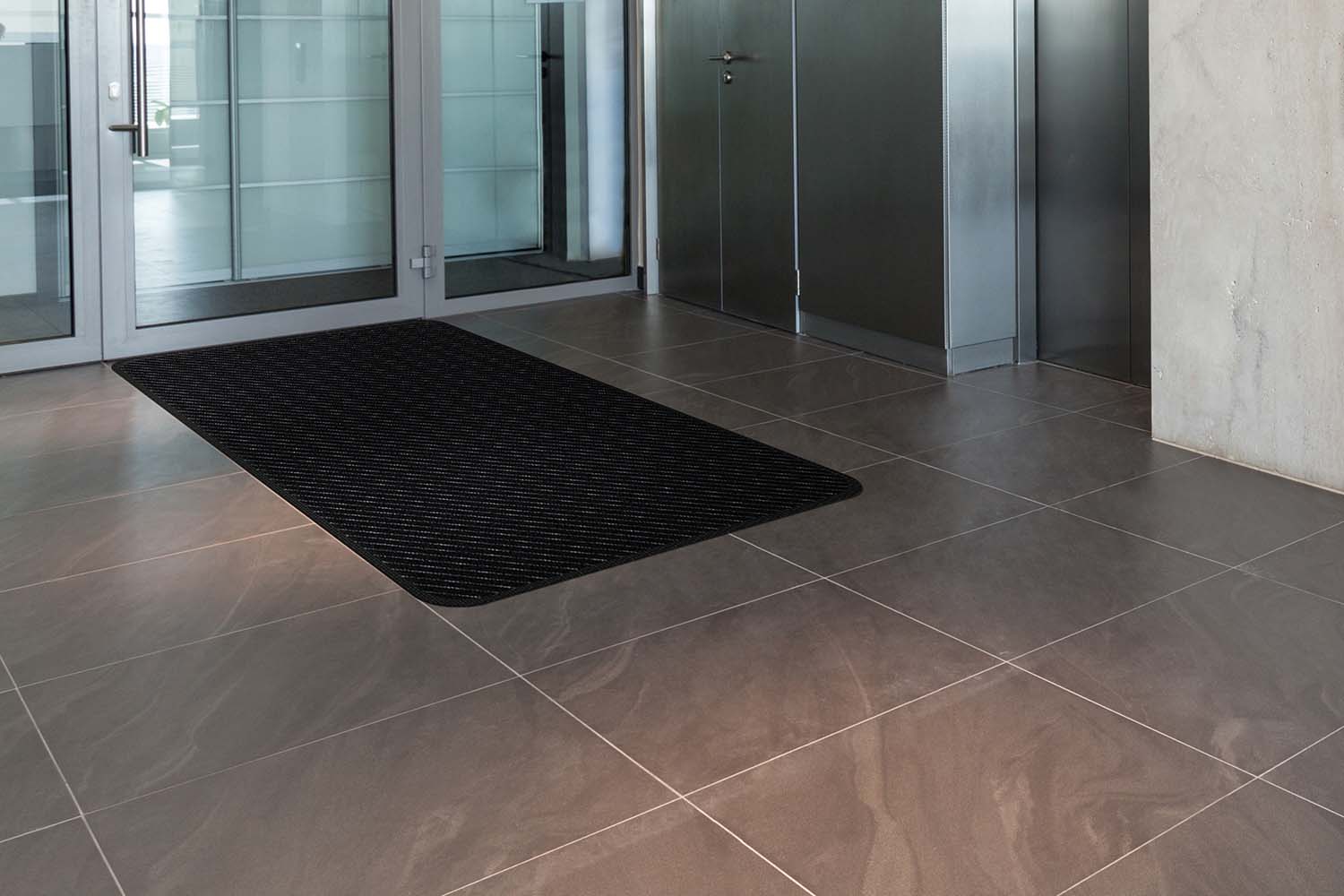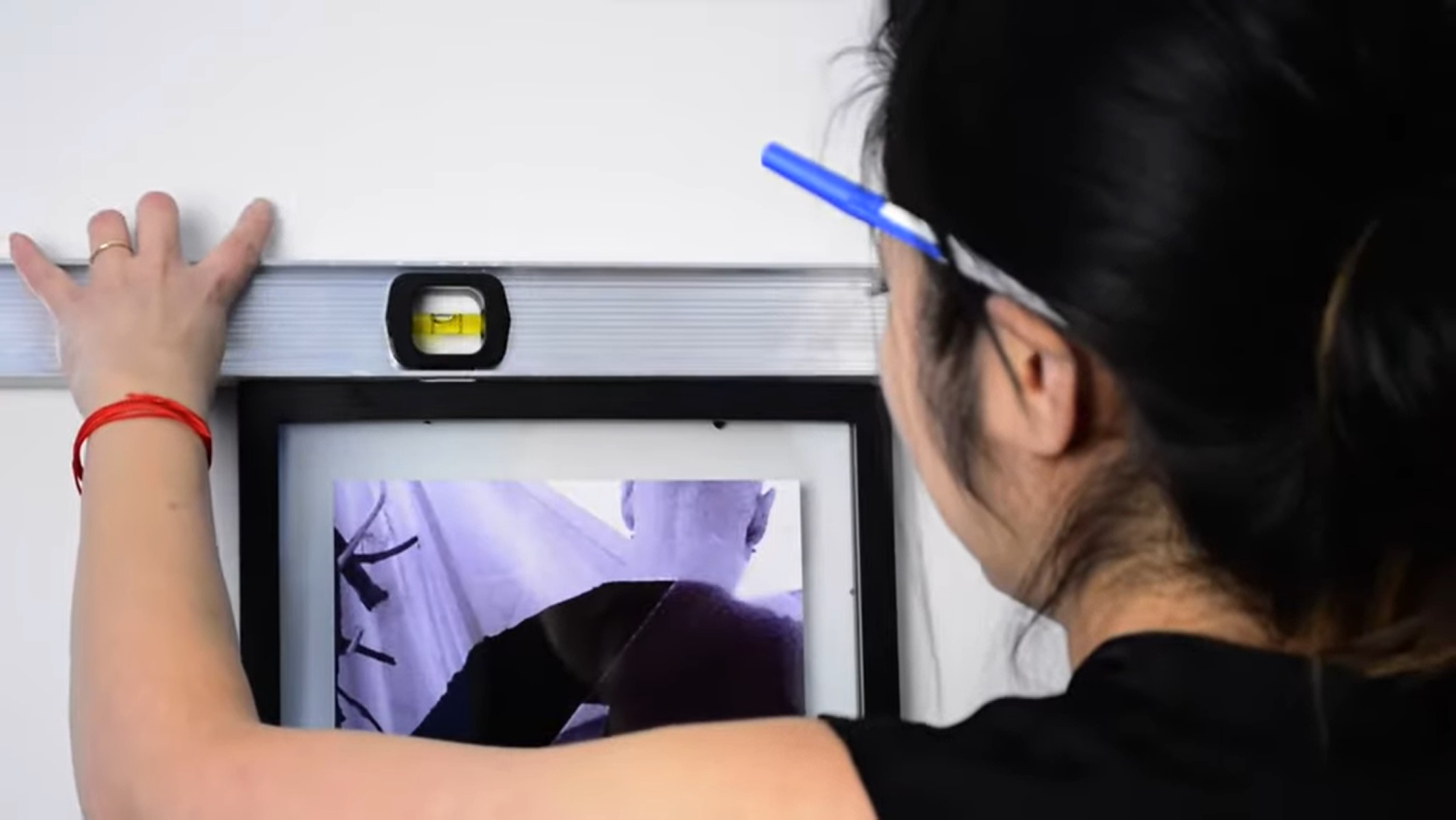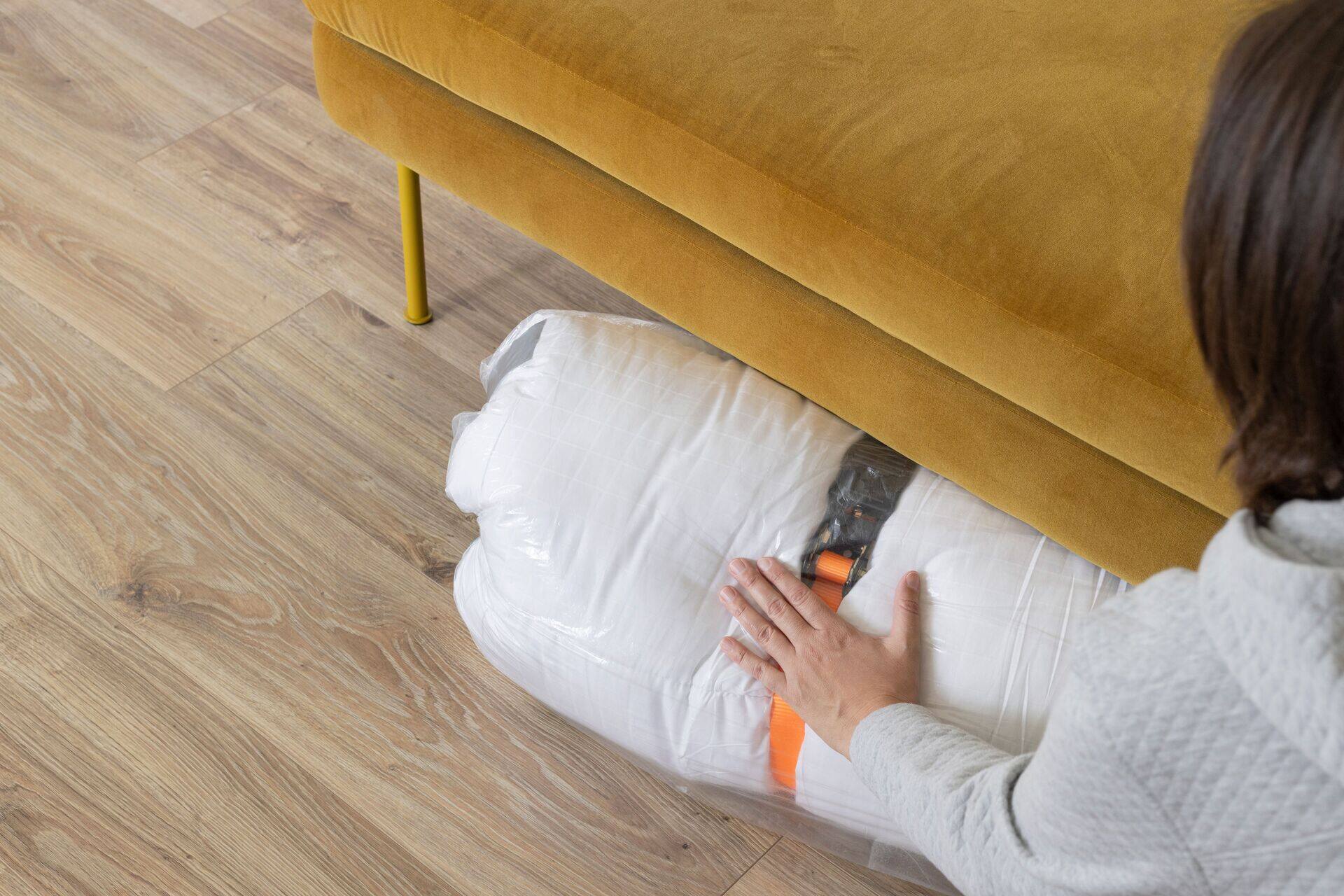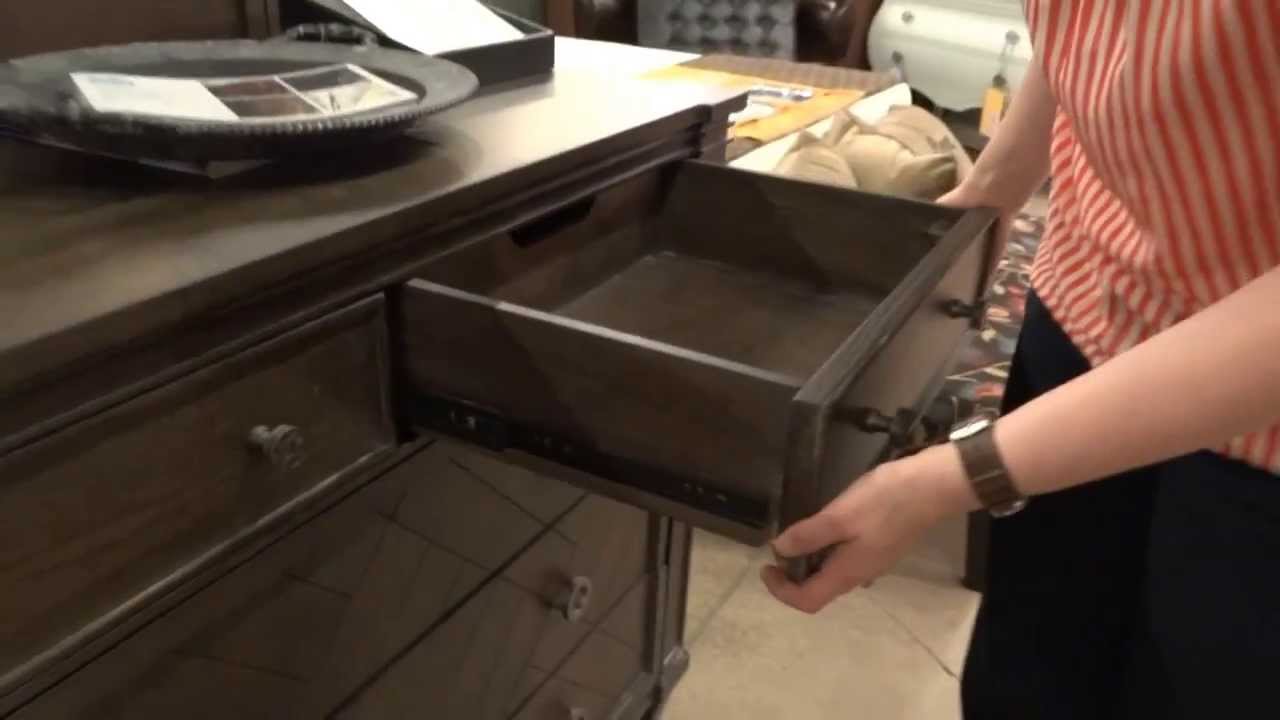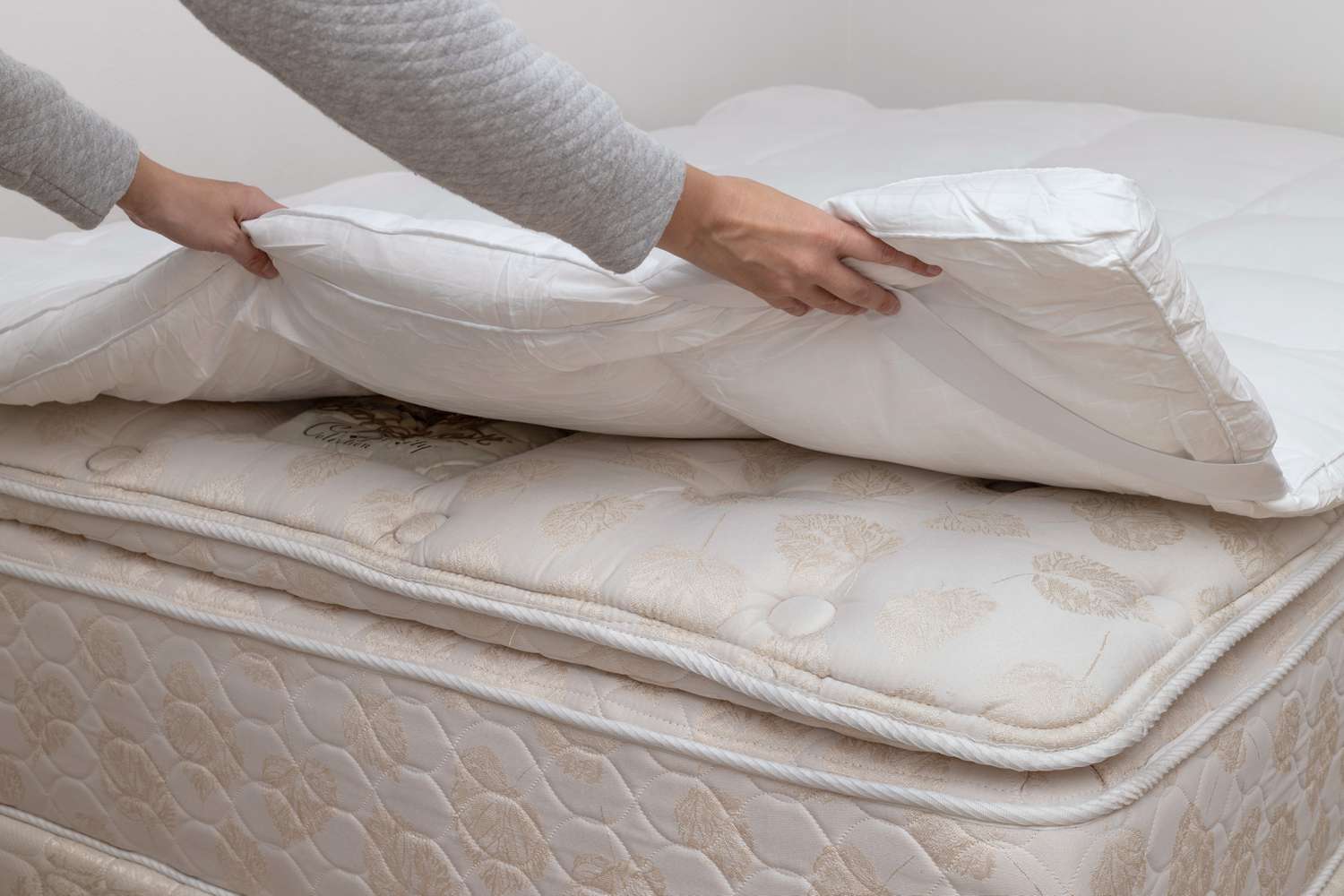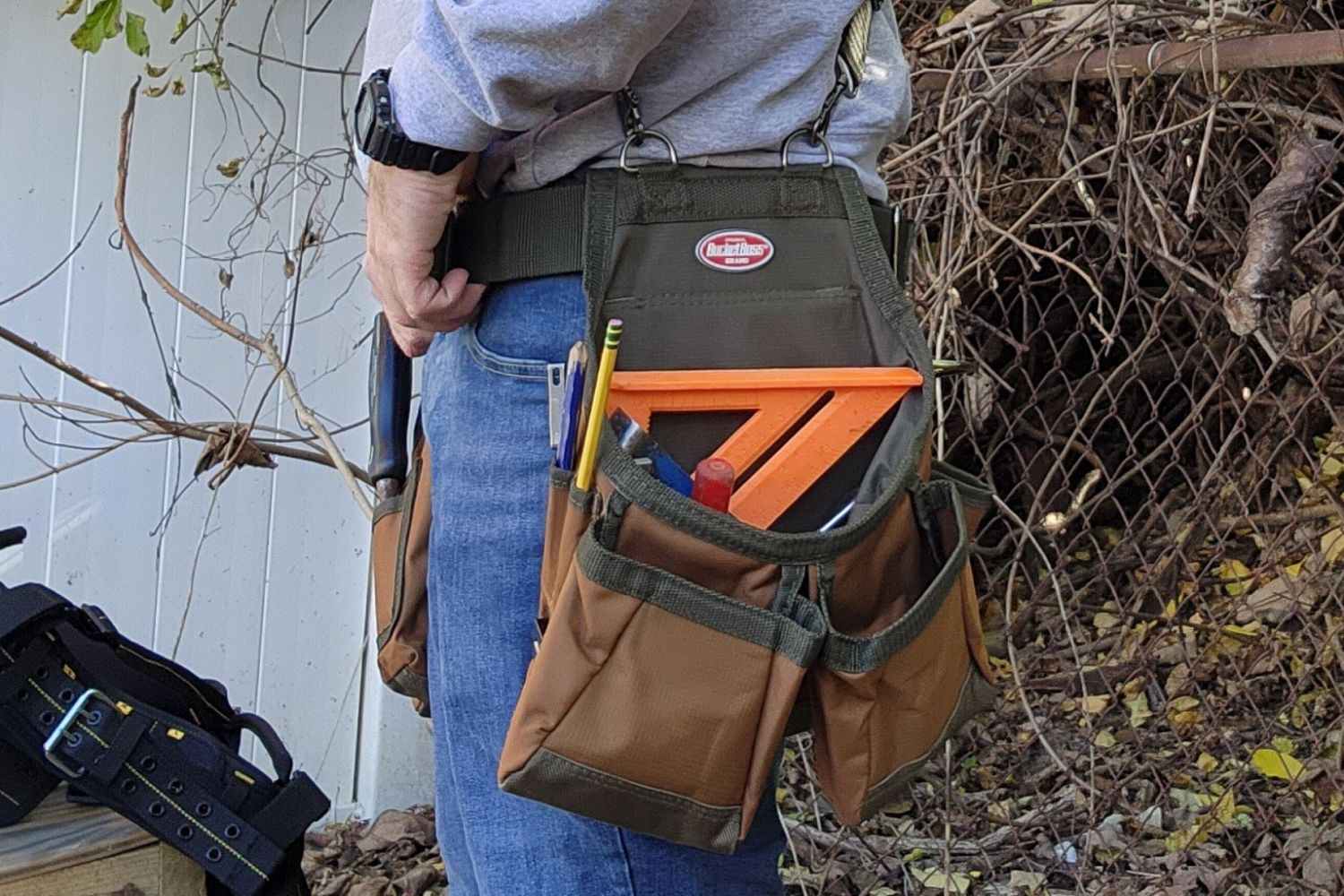Home>Furniture>Bedroom Furniture>How To Keep My Mattress Topper From Sliding
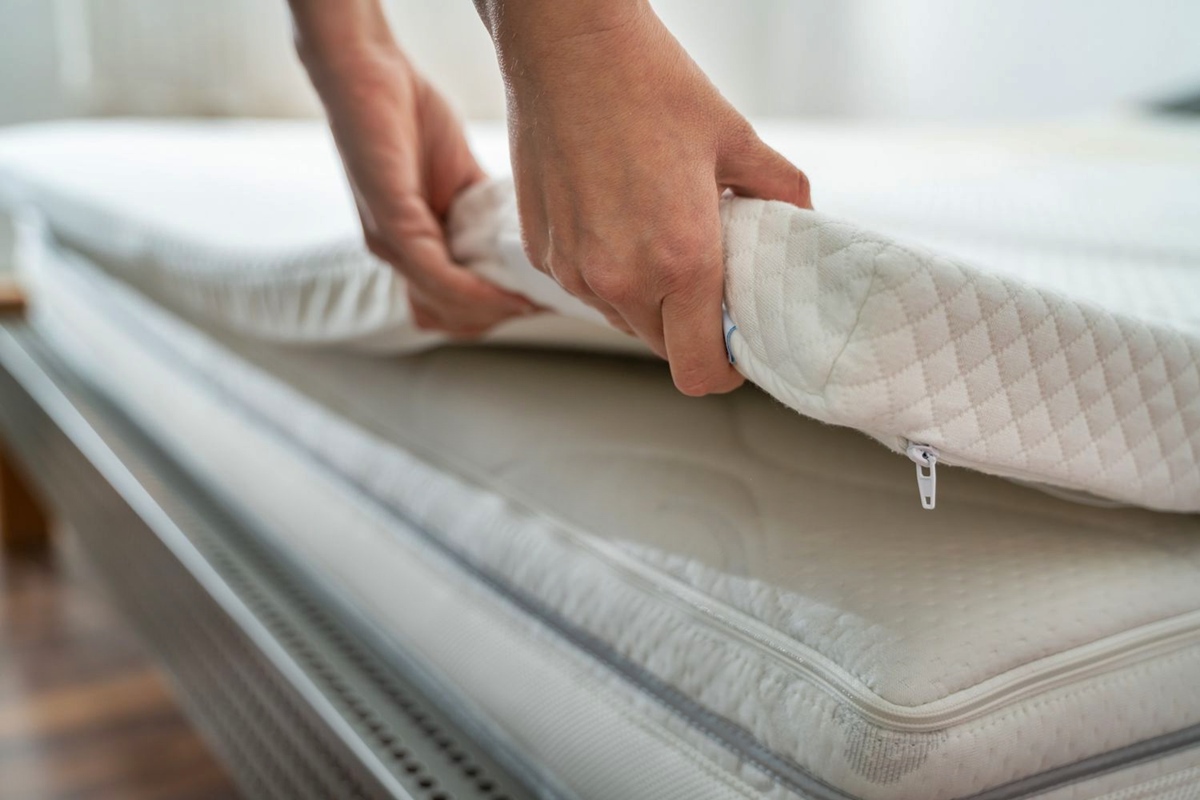

Bedroom Furniture
How To Keep My Mattress Topper From Sliding
Modified: January 9, 2024
Prevent your mattress topper from sliding with these simple tips. Keep your bedroom furniture in place and enjoy a comfortable night's sleep.
(Many of the links in this article redirect to a specific reviewed product. Your purchase of these products through affiliate links helps to generate commission for Storables.com, at no extra cost. Learn more)
Introduction
Welcome to our guide on how to keep your mattress topper from sliding. If you’ve ever experienced the frustration of a constantly shifting mattress topper, you know how annoying it can be. Not only does the sliding disrupt your sleep, but it also compromises the comfort and support of your mattress topper. Fortunately, there are several effective solutions to help keep your mattress topper securely in place.
In this article, we will explore various methods to prevent your mattress topper from sliding. We will discuss non-slip pads, Velcro strips, mattress toppers with elastic straps, safety pins, rubberized grip mats, and mattress encasements. By understanding the advantages and disadvantages of each solution, you can decide which option works best for you.
Before we dive into the solutions, it’s important to understand why mattress toppers can slide in the first place. The primary reason is that traditional mattress toppers are designed to rest on the surface of the mattress without any additional securing mechanisms. This lack of stability can cause the topper to shift and slide during regular movement throughout the night.
Additionally, factors such as the material of the mattress topper, the type of mattress, and the sleeper’s body movements can contribute to the sliding issue. However, with the right solution, you can say goodbye to the annoyance of a sliding mattress topper and enjoy a more comfortable and uninterrupted sleep experience.
Now, let’s explore the different solutions available to keep your mattress topper in place. Whether you prefer a DIY approach or a ready-made solution, we’ve got you covered. Keep reading to discover the option that suits your needs the best.
Key Takeaways:
- Say goodbye to the frustration of a sliding mattress topper with affordable and effective solutions like non-slip pads, Velcro strips, and mattress toppers with elastic straps. Enjoy uninterrupted sleep and enhanced comfort.
- Choose from versatile options such as rubberized grip mats and mattress encasements to keep your mattress topper securely in place. Say farewell to sliding and hello to a stable and comfortable sleep surface.
Understanding the Problem
Before we jump into the solutions, it’s essential to understand why mattress toppers slide in the first place. Several factors contribute to this issue:
- Lack of Grip: Most mattress toppers are made from materials like memory foam or down feathers that don’t have a natural grip on the surface of the mattress. This lack of friction allows the topper to move and slide with ease.
- Bed Movement: When you toss and turn or change sleeping positions during the night, your body’s movement can cause the mattress topper to shift. This movement is especially common if the topper is not securely attached to the mattress.
- Surface Texture: Some mattresses have slippery or smooth surfaces that make it difficult for the topper to maintain its position. This can be exacerbated by the materials used in the mattress topper, creating a slippery combination.
Now that we have a grasp on the factors contributing to the sliding problem, let’s explore the different solutions available to keep your mattress topper in place. Remember, finding the best solution often depends on your personal preferences and mattress type.
Evaluating Different Solutions
When it comes to preventing your mattress topper from sliding, there are several solutions available. Let’s take a closer look at each option and evaluate their effectiveness:
- Non-slip Pads: Non-slip pads are a popular choice for keeping mattress toppers in place. These pads are placed between the mattress and the topper to provide additional grip. They are usually made with rubber or silicone materials that create friction, preventing any sliding. Non-slip pads offer a simple and affordable solution, and they are easy to install. However, the effectiveness of non-slip pads may vary depending on the surface texture of your mattress and the weight and thickness of your topper.
- Velcro Strips: Velcro strips are another solution that provides a secure attachment between the mattress and the topper. One side of the Velcro is attached to the mattress, and the other side is attached to the topper. When pressed together, the Velcro grips and prevents any sliding. Velcro strips provide a strong hold and are relatively easy to install. However, they may not be suitable for all mattress and topper combinations, and the adhesive on the Velcro may lose its effectiveness over time.
- Mattress Toppers with Elastic Straps: Some mattress toppers come with built-in elastic straps that wrap around the corners of the mattress. These straps secure the topper in place and prevent any shifting. Mattress toppers with elastic straps offer a convenient solution as they eliminate the need for additional accessories. However, they may be less effective if the straps are not adjustable or if your mattress has non-standard dimensions.
- Safety Pins: If you’re looking for a low-cost DIY solution, safety pins can be an option. By fastening the topper to your mattress using safety pins, you can secure it in place. Safety pins are affordable and easy to find, making them a readily available solution. However, they may not be the most aesthetically pleasing option, and caution should be exercised when placing the pins to avoid any damage to the mattress or topper.
- Rubberized Grip Mats: Rubberized grip mats can be placed between the mattress and the topper to increase traction and prevent sliding. These mats are made from rubber or similar materials that provide excellent grip. They are easy to use and reusable. However, they may not be as effective on mattresses with particularly smooth or slippery surfaces, and they may add extra bulk and thickness to your sleeping surface.
- Mattress Encasements: Another effective solution is to use a mattress encasement. These are fitted covers that completely encase the mattress, including the topper. The tight fit prevents any shifting of the topper, keeping it securely in place. Mattress encasements not only prevent sliding but also offer protection against allergens and pests. However, they can be more expensive compared to other solutions, and they require more effort to install and remove for washing.
Now that you’re familiar with the different solutions available, it’s time to choose the one that best fits your needs and preferences. Consider factors such as ease of installation, effectiveness, cost, and compatibility with your specific mattress and topper. By selecting the right solution, you can bid farewell to a sliding mattress topper and enjoy a restful night’s sleep.
Solution 1: Non-slip Pads
Non-slip pads are a popular and effective solution for preventing your mattress topper from sliding. These pads, often made from rubber or silicone materials, are designed to create friction and provide a secure grip between your mattress and the topper.
Installing non-slip pads is a simple and straightforward process. Start by measuring the size of your mattress and trim the non-slip pad accordingly. Place the pad directly on top of your mattress, ensuring it covers the entire surface area. Then, carefully place your mattress topper on top of the non-slip pad, ensuring it aligns with the edges of your mattress.
One of the advantages of using non-slip pads is their affordability and availability. You can easily find them in most home goods stores or online retailers. They come in various sizes and thicknesses, allowing you to choose the one that suits your specific needs.
Non-slip pads offer reliable grip and stability, creating a firm bond between your mattress and topper. This prevents any shifting, sliding, or bunching up of the topper, enhancing your sleep experience. Additionally, non-slip pads are usually durable and long-lasting, meaning you won’t have to frequently replace them.
However, it’s worth noting that the effectiveness of non-slip pads can vary depending on the surface texture of your mattress and the weight and thickness of your topper. Some mattress surfaces are inherently more slippery, making it more challenging for the non-slip pads to create enough friction. Additionally, if you have a particularly heavy or thick mattress topper, you might need to use multiple non-slip pads for better stability.
Overall, non-slip pads are an affordable and convenient solution to keep your mattress topper from sliding. They provide a reliable grip, minimize movement, and help maintain the comfort and support of your sleeping surface. If you’re looking for a simple yet effective method to secure your mattress topper in place, non-slip pads are a great choice.
Solution 2: Velcro Strips
If you’re looking for a secure and adjustable solution to keep your mattress topper in place, Velcro strips are an excellent option. Velcro strips utilize the hook-and-loop fastening system to create a strong bond between your mattress and the topper.
Installing Velcro strips is relatively simple. Start by cutting the Velcro into smaller strips, ensuring that they are long enough to reach from one side of your mattress to the other. Attach one side of the Velcro (either the hook or loop side) to the corners or edges of your mattress. Place the corresponding side of the Velcro on the bottom of your mattress topper, aligning it with the attached Velcro on the mattress. Press the Velcro together, creating a secure attachment.
One of the main advantages of using Velcro strips is their adjustability. You can easily customize the position and tightness of the Velcro to achieve the desired level of stability for your mattress topper. This adjustability also allows for easy removal and repositioning of the topper when cleaning or rotating your mattress.
Velcro strips offer a strong and reliable hold, preventing any sliding or shifting of the mattress topper during sleep. They are particularly effective for thicker or heavier toppers that require additional support. However, it’s important to note that the adhesive on the Velcro may lose its effectiveness over time and may need to be replaced or reinforced periodically.
Furthermore, the success of using Velcro strips may depend on the compatibility between your mattress and topper. If your mattress has a smooth or slippery surface, it may be more challenging for the Velcro to create a secure attachment. Additionally, if your topper is made from a lightweight or thin material, the Velcro may not adhere as securely.
Overall, Velcro strips provide a reliable and adjustable solution to keep your mattress topper from sliding. With their strong grip and easy installation, they offer a convenient way to enhance the stability, comfort, and longevity of your sleep surface. If you prefer a customizable solution that allows for easy repositioning and removal, Velcro strips are an excellent choice.
To keep your mattress topper from sliding, try using a non-slip mattress pad or gripper underneath it. You can also use elastic straps or sheet fasteners to secure the topper to the mattress.
Read more: How Do I Keep My Mattress From Sliding
Solution 3: Mattress Toppers with Elastic Straps
If you’re looking for a hassle-free solution that doesn’t require any additional accessories, mattress toppers with elastic straps are worth considering. These toppers come with built-in elastic straps that wrap around the corners of your mattress, providing a secure and snug fit.
The installation process for mattress toppers with elastic straps is straightforward. Simply place the topper on your mattress, aligning the corners. Then, stretch and wrap the elastic straps around the corners, ensuring a tight and secure fit. The elasticity of the straps allows them to hold the topper in place, minimizing any sliding or shifting.
One of the key advantages of these mattress toppers is their convenience. You don’t have to worry about purchasing and installing separate accessories like Velcro or non-slip pads. The elastic straps are integrated into the topper design, providing a seamless solution.
Mattress toppers with elastic straps offer reliable stability, keeping the topper securely positioned throughout the night. The straps ensure that the topper stays in place, even during movements or multiple sleep positions. They are particularly beneficial for individuals who frequently change their sleeping position or tend to move around during sleep.
However, it’s important to consider the compatibility of the elastic straps with your specific mattress and topper. Some mattresses may have non-standard dimensions or thickness, which can affect the fit and effectiveness of the straps. Additionally, over time, the elasticity of the straps may start to degrade, resulting in a looser fit. In such cases, you may need to replace or tighten the elastic straps.
Overall, mattress toppers with elastic straps provide a convenient and reliable solution to prevent sliding. They eliminate the need for additional accessories and offer a secure and snug fit. If simplicity and ease of use are important to you, choosing a mattress topper with built-in elastic straps can provide a hassle-free option for keeping your topper in place.
Solution 4: Safety Pins
If you’re looking for an affordable and DIY solution to keep your mattress topper from sliding, safety pins can come to the rescue. Safety pins provide a simple yet effective method to secure your topper in place, preventing any shifting during sleep.
Using safety pins to secure your mattress topper is relatively straightforward. Start by lifting the corners of your mattress and aligning the corners of your topper with those of the mattress. Once aligned, insert a safety pin through both the topper and the mattress at each corner. Make sure to fasten the pins securely, ensuring that the topper is tightly anchored to the mattress.
One of the key advantages of using safety pins is their affordability and accessibility. Safety pins are widely available in craft stores, department stores, and online retailers at a low cost. They are durable and reusable, providing a long-lasting solution to prevent sliding.
Another benefit of using safety pins is the flexibility for adjusting the tightness of your topper. You can easily tighten or loosen the pins to achieve the desired stability for your specific mattress and topper combination.
However, it’s important to exercise caution when using safety pins to avoid any damage to your mattress or topper. Make sure to insert the pins through both layers without piercing the actual mattress material. Additionally, be aware that the safety pins may create small holes in the topper, so it’s recommended to place the pins in inconspicuous areas.
While safety pins can be an effective solution, they may not be the most aesthetically pleasing option. The pins can be visible and may create a slightly bumpy surface on your topper. If aesthetics are a concern for you, you may consider using safety pins on the underside of the topper where they are less noticeable.
Overall, safety pins provide a budget-friendly and DIY solution to keep your mattress topper in place. They offer flexibility in adjusting the tightness and provide a secure hold. If you don’t mind the slight bumpy surface or the visibility of the pins, using safety pins can be an effective way to prevent sliding and improve the stability of your sleep surface.
Solution 5: Rubberized Grip Mats
If you’re looking for a versatile and non-permanent solution to keep your mattress topper from sliding, rubberized grip mats can be a great option. These mats are made from rubber or similar materials that provide excellent friction and grip, creating a stable surface for your topper.
The installation of rubberized grip mats is quick and easy. Simply place the mat on top of your mattress, ensuring that it covers the entire surface area. Then, place your mattress topper directly on top of the grip mat. The rubberized surface will enhance traction and prevent any sliding or shifting of the topper.
One of the advantages of using rubberized grip mats is their versatility. These mats are available in various sizes and textures, allowing you to choose the one that suits your specific mattress and topper combination. They can also be easily trimmed to fit smaller or irregularly shaped mattresses.
Rubberized grip mats offer reliable stability, even on mattresses with smooth or slippery surfaces. The textured surface of the mat creates friction and enhances traction, ensuring that your topper stays firmly in place throughout the night. These mats are particularly beneficial if you tend to move around during sleep or frequently change sleeping positions.
Furthermore, rubberized grip mats are reusable and easy to clean. You can remove the mat whenever you need to clean or rotate your mattress, and then simply place it back on top when you’re ready. This convenience makes them a popular choice for individuals who prefer a non-permanent solution.
However, it’s important to note that rubberized grip mats may add extra bulk and thickness to your sleeping surface. If you prefer a sleek and minimalistic look, these mats may not be the most aesthetically appealing option. It’s also important to choose a mat with the right thickness, as a mat that is too thick can affect the comfort and support of your mattress.
Overall, rubberized grip mats provide a versatile and non-permanent solution to prevent sliding. With their excellent grip and easy installation, they offer a convenient way to enhance the stability and comfort of your sleep surface. If you’re looking for a solution that can be easily removed and reused when needed, rubberized grip mats are an excellent choice.
Solution 6: Mattress Encasements
If you’re looking for a comprehensive solution to keep your mattress topper from sliding while also offering additional benefits, mattress encasements are worth considering. Mattress encasements are fitted covers that completely encase your mattress, including the topper, providing a secure and slip-resistant surface.
Installing a mattress encasement is relatively straightforward. Start by removing your mattress topper and placing the encasement on your mattress, ensuring a proper fit. Zip up the encasement to securely seal it around your mattress. Once the encasement is in place, you can place your mattress topper back on top of it.
One of the main advantages of using mattress encasements is their ability to provide a complete barrier against sliding. The tight fit of the encasement prevents any shifting or movement of the topper, keeping it securely in place. This is particularly beneficial for individuals who tend to move around during sleep or have a mattress with a smooth surface.
In addition to preventing sliding, mattress encasements offer several other benefits. They provide protection against allergens, dust mites, and bed bugs, helping to create a healthier sleeping environment. Moreover, encasements can help prolong the lifespan of your mattress and topper by providing an extra layer of protection against spills, stains, and wear and tear.
However, it’s important to note that mattress encasements require more effort to install and remove compared to other solutions. You will need to fully remove and reapply the encasement when cleaning or rotating your mattress. Additionally, mattress encasements may add some bulk to your sleeping surface and can impact the breathability of your mattress and topper, especially if they are made from non-breathable materials.
When choosing a mattress encasement, look for one that is specifically designed for your mattress size and depth. The encasement should have a secure zipper and be made from high-quality, breathable materials to ensure comfort and durability.
Overall, mattress encasements offer a comprehensive solution to prevent sliding while providing additional benefits such as allergen protection and mattress preservation. If you’re looking for a long-term solution that offers enhanced stability and protection, mattress encasements are an excellent choice.
Read more: How To Keep A Mattress Pad From Sliding
Conclusion
Dealing with a sliding mattress topper can be frustrating and disrupt your sleep experience. Fortunately, there are several effective solutions to keep your mattress topper securely in place. By understanding the causes of sliding and evaluating different options, you can find the one that best suits your needs and preferences.
Non-slip pads are a popular choice thanks to their affordability and ease of use. They provide a simple and effective way to create friction and prevent the topper from sliding. Velcro strips offer a secure and adjustable solution, allowing you to customize the tightness and easily reposition the topper when needed.
If you prefer a hassle-free option, mattress toppers with elastic straps provide a convenient solution without the need for additional accessories. Safety pins offer an affordable DIY approach, allowing you to secure the topper in place with ease. Rubberized grip mats provide versatility and a non-permanent solution, enhancing traction and stability.
Lastly, mattress encasements offer a comprehensive solution that prevents sliding while also providing additional benefits, such as allergen protection and mattress preservation. They are especially beneficial for those looking for a long-term solution and added peace of mind.
When choosing the right solution for your sliding mattress topper, consider factors such as compatibility with your mattress and topper, ease of installation, adjustability, and long-term durability. Each solution has its own advantages and may work better for certain sleepers or mattress types.
By implementing one of these solutions, you can say goodbye to the annoyance of a sliding mattress topper and enjoy a more comfortable and uninterrupted sleep experience. Whether you opt for non-slip pads, Velcro strips, elastic straps, safety pins, rubberized grip mats, or mattress encasements, rest assured that your mattress topper will stay securely in place, providing the support and comfort you desire.
Frequently Asked Questions about How To Keep My Mattress Topper From Sliding
Was this page helpful?
At Storables.com, we guarantee accurate and reliable information. Our content, validated by Expert Board Contributors, is crafted following stringent Editorial Policies. We're committed to providing you with well-researched, expert-backed insights for all your informational needs.
